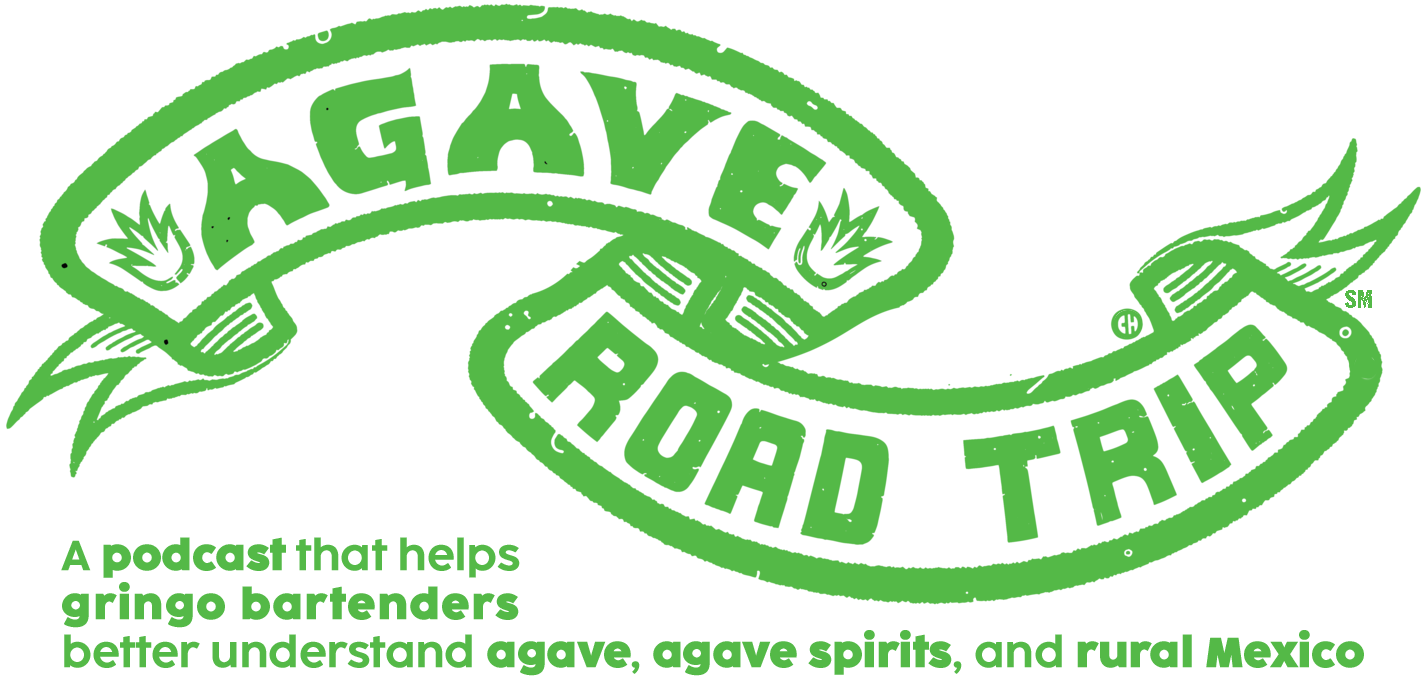The Diffuser: Nature’s Answer to Better Tequila
Tequila collectors the world over hate the diffuser, the industrial machine that is used to turn blue weber agave into tequila. So Chava and I attempt in this episode to show that the diffuser can be nature's way to make a better, more accurate tequila. Maybe because we're contrarians. Or maybe because science. Find out in this episode of Agave Road Trip!
This episode of Agave Road Trip is brought to you by Montelobos Mezcal Artesenal. The driving force in the creation of Montelobos was to produce a mezcal that realizes the innate expectations within the agave plant — a mosaic balance of complexity that allows one to discover something new every time within one of the most layered, indulgent spirits. To learn more about Montelobos, visit montelobos.com
Agave Road Trip is a podcast that helps gringo bartenders better understand agave, agave spirits, and rural Mexico. It’s hosted by Lou Bank and Chava Periban.
Episode notes
You’ll find that post from Agavache — the one where they break down what they believe creates specific flavors and aromas in agave spirits — here. The fancy word Chava uses is actually a phrase: “fructan hydrolase.” To read about the amazingly exciting world of enzymatic hydrolysis of fructans (the study to which Chava refers), click here.
UPDATE 10/15/2021: I’m adding this here because there have been some questions on social media about diffusers that … well, suggest that maybe we didn’t cover everything in this episode that we could have. So …
First, I’ll say that I’ve never tasted anything that was distilled in a diffuser that I feel the need to taste again. Not that it I found it all bad. I didn’t. Most of it, in fact, I found inoffensive — which is neither good nor bad. I’ve found diffuser-made agave spirits to be uninteresting, single-note spirits. Uninteresting to my palate.
Second, I’ll say that my palate is hardly the “correct” palate. I have plenty of friends who like diffuser-made tequila and mezcal just fine, and they are hardly inexperienced drinkers. The opposite, in fact. So is my palate “more correct” than their’s? No.
As to the purpose of a diffuser … can it take immature agaves and convert the fructans/agavins into fermentable sugars, so they can be used to make tequila/mezcal/destilado de agave before the agave has reached maturity? Yes. But so can an autoclave, a brick oven, or a stone-lined earthen oven. There’s nothing magical (or satanic) about a diffuser. It’s simply a piece of technology.
For agaves to survive in the wild, in the desert, they had to protect themselves from predators: insects, goats, mezcaleros, you name it. One of those survival techniques is that the “carbohydrates” that the plant will eventually use to reproduce — to build its quiote, make its flowers, make its seeds — are stored not as sugars, as they are in many plants, but as indigestible agavins. When the plant has stored up enough of them that it has the resources to reproduce, it will begin to convert them into usable sugars. It then acts very quickly — while it’s a vulnerable sugar source — to reproduce. I think it’s in this episode that Dr. Ivan Saldana talks about being able to watch the quoite grow, the plant forms it so rapidly.
So while other plants have their sugars at the ready, the agave — which has to survive for years in the desert as a rare food source — stores them in a way that they are not consumable. Kind of like putting your money into a 15-year CD instead of keeping it liquid.
Anyway, the point is, the plant can convert those agavins into usable sugars anytime it wants — and it will do that, sometimes, if it needs the energy boost to heal itself. It will release enzymes. And humans can do that by hydrolyzing those agavins, which can be done with a diffuser (hydrolyzation either via acids or, if the diffuser is only blasting the raw, shredded plant with hot water, by heating that water in something like an autoclave after blasting), an autoclave, a brick oven, or an underground earthen oven. The diffuser is simply the most efficient way to complete the process — efficient in that it takes less time and converts more of the agavins into fermentable sugars than the other processes. Except maybe the internal-enzyme method.

